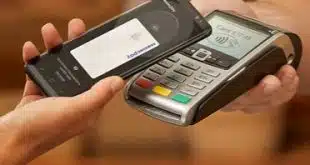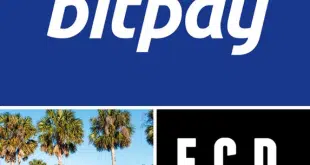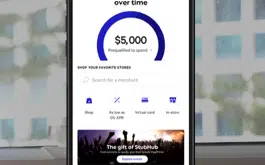Merchants like programs that cover their credit card acceptance costs. So do ISOs and acquirers, some of which see a big opportunity in programs that help merchants with surcharging.
Surcharging for credit card transactions or offering a cash discount may have obvious benefits for merchants, but these programs also carry a payoff for the independent sales organizations and acquirers that offer them.
They can aid merchant retention, provide a unique service to get past the standard merchant-services sales pitch, and boost the ISO’s revenue, not only from the addition of the merchant to the ISO’s portfolio, but from a better profit margin on transactions processed via the programs. Merchants—always on the lookout to reduce their card acceptance costs—may like them because of the potential to save money.

A cash discount is when the merchant provides a discount from the published price when the consumer pays with cash. “This has always been allowed and is not restricted by state,” David Leppek, president of Transaction Services, an Omaha, Neb.-based payments provider. “But it must clearly be a discount from the published price.”
How much might participation in a surcharging or cash-discount program affect a merchant? “For the merchant, depending on the mix of credit versus debit, we regularly see a 90% reduction in their net effective rate,” Leppek says. “Because the credit card cost is so much higher than the cost of debit card, even a 50/50 split will enjoy the much higher reduction in cost.” The average reduction in the merchant’s net effective rate is 15 basis points, says Leppek.
‘Still in Limbo’
While attractive, such programs may not be so easy to set up, and can be fraught with legal complications. While cash-discount programs have long been permissible in all states, surcharging is outlawed in 10 states, including several of the most populous. And though allowed by the card networks in 2013, surcharging continues to be caught up in the courts.
Also, abuses connected with surcharging have in some cases made merchants and regulators wary (“The New Battle: Surcharge Fraud,” December).
In March, a U.S. Supreme Court decision returned to the state of New York a case in which merchants—the plaintiffs—argued the ability to assess a surcharge is a free-speech action. The state, one of the 10 that bans surcharges, effectively prevents merchants from advertising the extra cost they incur to access credit cards, the plaintiffs argued. On the contrary, the state argued, the ban on credit card surcharges has nothing to do with free speech and is simply a price regulation.
What happens next is uncertain. The Supreme Court’s ruling, in which all eight sitting justices concurred, sent the case back to the U.S. Court of Appeals for the Second Circuit for reconsideration. The appeals court had ruled in favor of the state of New York.
“The Supreme Court effectively ruled the law regulated speech, but they kicked the question back to the Second Circuit as to whether that regulation was constitutional or not,” says Josh Rosenblatt, an attorney at Frost Brown Todd LLC, a Cincinnati-based law firm that has a payments practice. “We’re still in limbo.”
The 2013 easing of surcharging restrictions by the card networks was part of a gigantic interchange settlement, but even that case is now shrouded in doubt. In 2016, the $5.7 billion settlement was thrown out by the Second Circuit Court of Appeals because the court concluded lawyers and class representatives in the case had shortchanged one set of plaintiffs in favor of another in their efforts to reach an agreement and collect legal fees.
The case now must be retried in federal court in Brooklyn, N.Y. Despite the setback, the card brands have so far retained the changes they made to their rules following the 2013 settlement.
The differences in how state statutes are written also contributes to the ambiguity surrounding surcharging. “Many of these surcharging prohibitions are found within consumer credit protection statutes,” says Rosenblatt. “It depends on how the statute is worded and how the terms are defined.”
‘Compliant And Transparent’
“Limbo” or not, the ISO and acquiring industry is moving ahead with their plans to offer surcharging and cash-discount programs.
Limitless is processor JetPay Corp.’s cash-discounting program, now in its second year. “We have new merchants and agents that sign up on a daily basis,” says Peter Davidson, vice chairman of the Berwyn, Pa.-based company. “It’s a nice differentiator for our partners.”
Based on JetPay’s assessment of state laws, it can offer Limitless in 49 states, with Connecticut as the exception because its statutes do not provide for a clear discount for cash, Davidson says.
To use Limitless, merchants must process their credit and debit card transactions with JetPay. Any compatible point-of-sale device, whether it’s a countertop terminal, virtual terminal, or mobile device, works. The merchant must post two signs. One declares that all prices are for payments made with cash. The other is a schedule of the added fee if paying with a card. It’s a sliding scale based on the value of the purchases, typically topping out at 3% or 3.5%, he says.
Transaction Services’ program also requires merchants to post signs. The merchant’s POS terminal uses software written by Transaction Services that identifies the card and determines if a surcharge is warranted.
“If a credit card is surcharged, the merchant is only paid the portion minus the surcharge,” Leppek says. “If a debit card or prepaid card is not surcharged, the merchant is paid the amount they expect to be paid, and debited a standard debit/prepaid fee at the end of the month.”
Precise details of each transaction are included on merchant statements. “Each terminal credit card statement explains the surcharge policy, percent, and line items for the surcharge amount,” Leppek says. “Our program is compliant and completely transparent.”
In another measure to ensure surcharged transactions are compliant with card-brand rules, Transaction Services assigns a unique identification tag to them “so they differentiate the portion of the sale that is the subtotal versus the surcharge amount,” he says, “again in an effort to assure the solution is compliant.” Some competitors neglect to do this, a move that Leppek says could result in a fine or cancellation of card acceptance for a merchant.
‘More And More Common’
Compliance is part of the sales pitch to merchants, but the primary point centers on the cost savings. “Merchants are tired of paying for electronic payment acceptance,” says Adil Moussa, principal of Omaha, Neb.-based Adil Consulting. “They consider it to be an extra tax that doesn’t really serve anything except making issuers and acquirers richer.”
Still, not every merchant type views surcharging or cash discounting as a viable option. “Today, this is not universal,” JetPay’s Davidson says. Travel or tourist destination merchants might welcome such programs, “places where someone sells unique products or services,” he says.
Eventually, more merchants will test these programs, Davidson says. Smaller merchants appear more receptive than larger ones at this time, but Davidson says adoption among larger merchants may spread over the next three to five years. “As consumers get used to seeing it, [merchants] will get more comfortable with it,” he says.
Leppek entertains big ambitions for surcharging and discounting programs, too. “As merchants continue to explore surcharging, it will become more and more common,” he says, “and therefore more regularly accepted.”
Already, he’s seen evidence of this. “One of our large merchants that chose to surcharge was concerned they would get a negative response from their customers so they asked us to produce and provide a small card explaining the program,” Leppek says. The card contained Transaction Services’ name and number.
“Of the cards that were given out by our merchant whenever an inquiry was made, 70% resulted in phone calls to our sales department asking how the cardholder could implement a similar solution for their own business.”
This speaks to the programs’ potential impact on the cost of acquisition and merchant retention. “ISOs will no longer be shopped on price,” Moussa says. “Unless they really mess up the delivery and the service, a merchant is just not going to leave them.”
A marketing campaign, designed by Moussa, generated a 6% response rate, Moussa says, and a 50% closing rate. “That means on every 100 mailers sent, the ISO boards three merchants. That leaves us with an acquisition cost of $40 per merchant.”
Leppek, meanwhile, says the cost of acquisition is higher because of the educational process necessary in the sales pitch. “Merchants are sometimes skeptical that this solution is truly compliant, but the regular news on the topic, complemented with regular exposure in select markets have helped improve this process,” he says.
Revenue Boost
But the greatest potential impact may be on the ISO’s or acquirer’s revenue. “Revenues will dramatically increase for ISOs that offer this solution,” Moussa says.
A revenue boost is not uncommon, Leppek says. “For the ISO space, because merchant surcharging requires that the merchant only surcharge the amount that they are in turn charged, and due to the wide range of credit card fees, a 3% or 4% surcharge is typical,” he says. “This is equivalent to pricing the merchants at a 3% or 4% flat rate. So, the ISO can expect a 90-basis point over interchange margin. This is huge in segments where the ISO might otherwise only make 5 five basis points typically.”
Acquirer interest in surcharging and cash-discount programs is growing, says Rosenblatt. “We have clients that want to roll out these programs,” he says. “Typically, it’s those in low-margin industries with ‘sticky’ customers,” referring to very loyal ones.
The expectation is that more merchants will adopt surcharging and cash-discounting programs. “It will be commonplace in industries where it makes sense,” Rosenblatt says. U.S. merchants may follow a pattern similar to that of their Australian counterparts, which were given the OK to surcharge in 2003. “It took about seven to 10 years to get significant traction in Australia,” says Rosenblatt.
As Leppek says, “There is a clear segment of American businesses that is looking for ways to facilitate their business needs and reduce their costs. Merchant surcharging is a compliant method to reduce these costs, and improve a business’s ability to be successful.”




